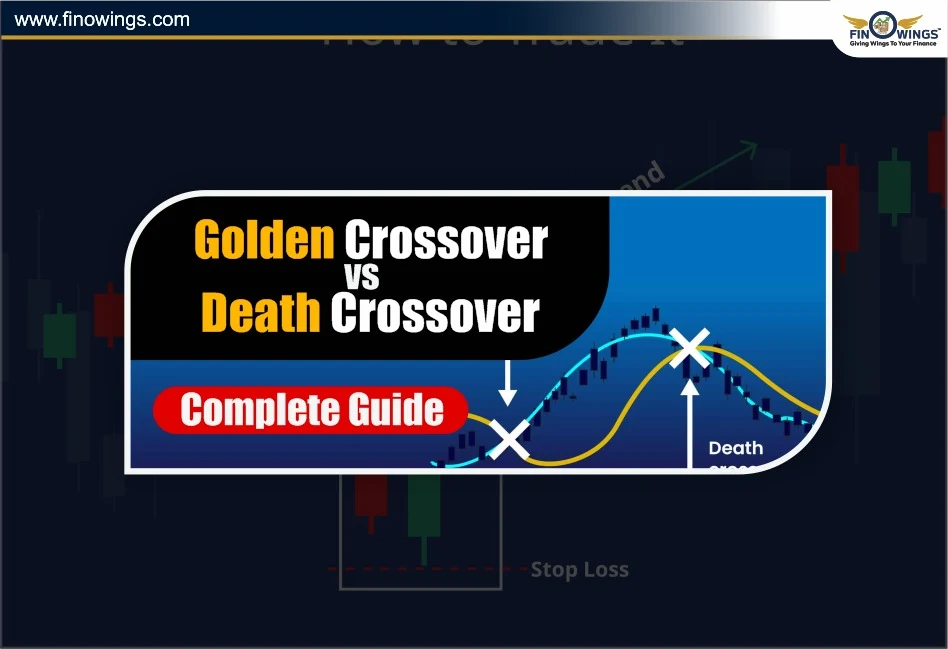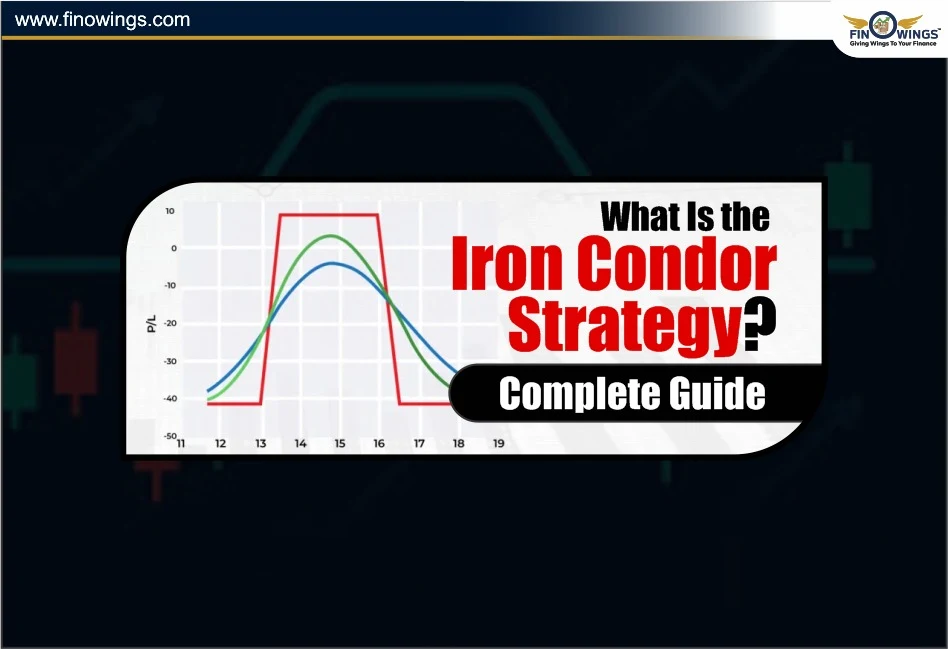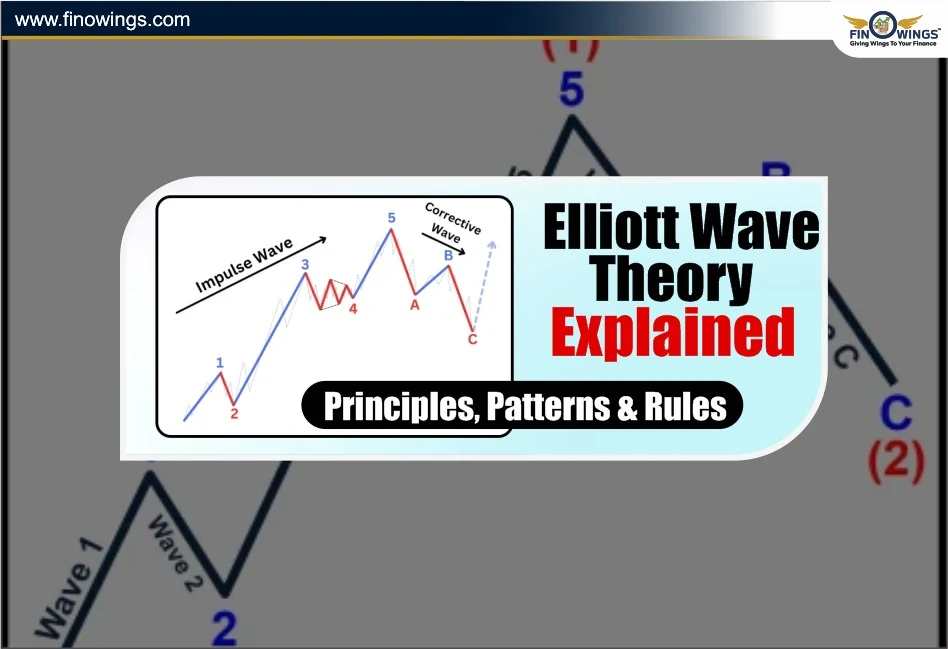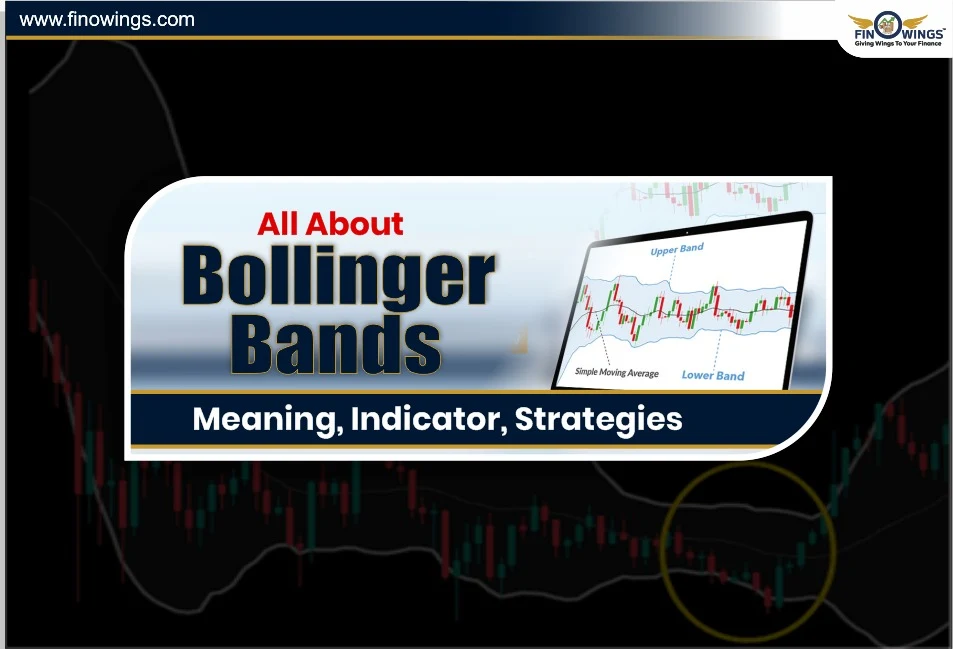Home >> Blog >> Golden Crossover vs Death Crossover: Complete Guide
Golden Crossover vs Death Crossover: Complete Guide

Table of Contents
The Moving Averages play a significant role in identifying and defining the trends in the stock market. Among the strongest and most popular indicators are the Golden Cross and Death Cross. Both are momentum-based indicators and are used in making buy and sell decisions in the market, but they are opposites of each other.
In this article, we'll cover the Golden Cross and Death Cross in detail, their formations, implementations in a trading plan, and which of the two depicts a stronger trend reversal.
Golden Cross
A Golden Cross is a technical indicator and is an indication that the long-term uptrend is soon to occur on a stock or index. This occurs when short-term moving average (usually 50 days) rises above long-term moving average (usually 200 days).
The crossover indicates that the trend of buying in recent times is high enough that the prior trend of selling can be fully overpowered. This indicates that the trend is shifting from bearish to bullish.
Example of a Golden Cross Over:
Take Reliance Industries as a case study. If you look at the 50-day moving average (which is the short term average) of Reliance Industries and see it moving up and crossing the 200-day moving average (which is the long term average) on the upside.
This crossover signifies and implies that the buying pressure is growing stronger and that the stock will continue increasing in price. This is called a Golden Cross over.
What is a Death Crossover?
A Death Crossover (or Death Cross) is a complete contrast to a Golden Cross. This is a bearish signal and implies that a stock will continue to decline and drop to the long term price floor.
This occurs when a short-term moving average (50-day) is crossing below the long-term moving average (200-day). This implies that the selling pressure is growing and weak price action is present.
Example of a Death Crossover:
Take TCS, if you see the 50-day moving average falling beneath the 200-day moving average then you will see a Death Crossover signal. This tells us that the stock will continue to decline until new buying pressure is present.
Golden Crossover vs Death Crossover
Both Death Cross and Golden Cross give an insight into the market sentiment and are important to a trader. The Golden Cross is a signal to buy, while the Death Cross is a signal to sell.
Here’s a quick comparison:
|
Basis |
Golden Crossover |
Death Crossover |
|
Definition |
Short-term MA crosses above long-term MA |
Short-term MA crosses below long-term MA |
|
Signal Type |
Bullish |
Bearish |
|
Market Trend |
Start of an uptrend |
Start of a downtrend |
|
Common Moving Averages Used |
50-day & 200-day |
50-day & 200-day |
|
Trader Action |
Buy or go long |
Sell or go short |
|
Market Psychology |
Buyers gaining control |
Sellers gaining control |
Moving Averages in Crossovers
Short-Term Moving Average (50 day) = Recent price momentum
Long-Term Moving Average (200 day) = Wider trend
When these two lines cross each other, they offer traders insights about the shifts in direction in the market, finding new opportunities.
Golden Crossover Strategy
The Golden Crossover strategy is simple, but powerful for swing traders and long-term investors.
(Source: Tradingview)
Steps to Use the Golden Crossover Strategy:
1. Locate a Bullish Crossover:
Look for the 50-day moving average line crossing above the 200-day line.
2. Confirmation with Volume:
A real bullish signal is almost always accompanied by increased trading volumes.
3. Position a Long Trade:
After the crossover is validated, you may wish to buy or go long on the stock.
4. Risk Management with a Stop-Loss:
To control risk, a stop-loss is kept a little below the long-term moving average.
5. Plan Your Exit:
Exit when the short-term moving average starts to flatten or when a possible Death Cross forms again. Example:
When the Nifty 50 index experienced a prolonged downtrend and then a Golden Cross in 2020, it indicated the beginning of sustained bullish momentum.
Death Crossover Strategy
This strategy, called the Death Crossover Strategy, allows you to capitalise on the market decline.
Steps to Use Death Crossover Strategy:
1. Look for a Bearish Crossover- The significant 50-day moving average crosses down below the 200-day moving average.
2. Confirmation with Volume- The increase in selling volume strongly supports the reversal.
3. Short Positions or Exit Long Positions- Traders may correspondingly short-sell or step out of long positions.
4. Stop-Loss- Set a stop-loss to avoid significant losses, and it should be placed above the long-term moving average.
5. Exit- Relinquish your position when a stock is range-bound or when the next Golden Cross is formed.
Example:
In early 2022, the NASDAQ and the S&P 500 were experiencing Death Crossovers and other global indices were influenced negatively for the following months, indicating a bearish trend.
Combining Death and Golden Cross with Other Indicators
Adding the golden cross and dead cross in tandem to other strategies may increase the effectiveness of your trading strategy.
Always use additional indicators for confirmation:-
Relative Strength Index (RSI): Signals whether the market is overbought or oversold; thus, it helps the most in validation.
MACD (Moving Average Convergence Divergence): Serves to reaffirm the actual strength of the market trend.
Volume Analysis: When the volume of trades increases, the value of the crossover becomes more dependable.
These will help devise accurate systems to trade and avoid market traps.
Advantages of Golden and Death Crossover
|
Golden Crossover Advantages |
Death Crossover Advantages |
|
Identifies long-term trends. |
Warns of possible market slumps. |
|
Assures the buyer once confirmation is given. |
Greatly helps in profit protection, due to strategic exits before large losses. |
|
Best approach for positional and swing trades. |
Best approach for shorting the market. |
Limitations of Crossover Strategies
Lagging Indicator: Signals will occur after the trend has appeared.
False Signals: During sideways or choppy markets, crossovers can provide unfulfilling trade entry.
Works Best on Higher Time Frames: The most accurate signals are found on daily or weekly charts, not intraday.
Conclusion
Certainly, both Golden Crossover and Death Crossover are valuable tools in technical analysis. One marks the beginning of a bullish rally while the other signals a bearish downturn. The Golden Crossover strategy focuses on identifying potential uptrends, and the Death Crossover strategy warns of the presence of potential downtrends.
Learning Golden Crossover vs Death Crossover gives traders the basic foundation to pinpoint significant market changes, which helps in risk management. If used in conjunction with volume, RSI, and MACD, the signals will help increase the chances of successful trades.
DISCLAIMER: This blog is NOT any buy or sell recommendation. No investment or trading advice is given. The content is purely for educational and information purposes only. Always consult your eligible financial advisor for investment-related decisions.
















